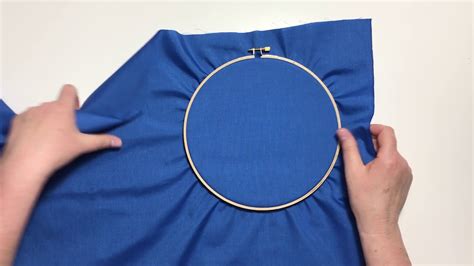How To Embroider Stretchy Fabrics
Ronan Farrow
Mar 31, 2025 · 3 min read

Table of Contents
How to Embroider Stretchy Fabrics: A Comprehensive Guide
Embroidering stretchy fabrics like jersey, spandex, or lycra can seem daunting, but with the right techniques, it's achievable and rewarding! This guide will walk you through the process, ensuring your embroidery projects on stretchy materials turn out beautifully.
Choosing the Right Materials
The key to successful embroidery on stretchy fabrics lies in selecting the appropriate materials. Using the wrong materials can lead to puckering, distortion, and ultimately, a ruined project.
1. Stabilizer:
This is arguably the most crucial element. Avoid using tear-away stabilizer; it's too stiff and will pull the fabric. Instead, opt for:
- Cut-away stabilizer: This allows for flexible movement and prevents puckering. It's left in place after embroidering, providing support and structure.
- Water-soluble stabilizer: This dissolves away after washing, leaving a clean, professional finish. Ideal for delicate fabrics and small projects. Choose a high-quality, less-likely-to-leave-residue type.
2. Needles:
Use sharp, fine needles specifically designed for stretch fabrics. A size 75/11 or 80/12 is a good starting point. Sharp needles are crucial to prevent skipped stitches and fabric damage.
3. Threads:
Choose threads that have some give, like rayon or polyester embroidery threads. These threads are more flexible and less prone to breakage than cotton threads when working with stretch.
Preparing Your Fabric and Stabilizer
Proper preparation is half the battle! Taking the time to prepare your materials correctly will save you frustration later on.
1. Pre-wash Your Fabric:
This crucial step prevents shrinkage after the embroidery is completed. Always pre-wash your stretchy fabric to avoid unpleasant surprises.
2. Hooping:
This is where the magic happens! Proper hooping is essential for preventing puckering. Avoid pulling the fabric too taut. Instead, aim for a gentle, even tension. Here are some tips:
- Hoop the stabilizer first: Place the cut-away or water-soluble stabilizer in the embroidery hoop, ensuring it's smooth and wrinkle-free.
- Gently place the fabric on top: Position the fabric over the stabilizer, making sure there are no wrinkles or creases. Avoid stretching the fabric too tight.
- Hoop from the back: Starting from the back of the hoop, carefully tighten the screw to secure the fabric and stabilizer. Ensure the tension is even all around to avoid distortion.
Embroidering Stretchy Fabrics: Techniques and Tips
Now, for the fun part! But even with the right preparation, certain techniques are beneficial for success.
1. Stitch Selection:
Choose stitches that are suitable for stretch fabrics. Avoid dense stitches that might pull the fabric. Consider using:
- Satin stitches: These can be used carefully, but use a smaller stitch density for stretchier fabrics.
- Fill stitches: These offer flexibility and work well with stretch fabric.
- Running stitch: A great, basic stitch for outlining and simple designs.
2. Slow and Steady Wins the Race:
Embroider slowly and carefully, especially around curves and corners. This precision will prevent skipped stitches and puckering.
3. Take Breaks:
If you're working on a large project, take breaks to avoid fatigue and ensure consistent tension throughout the embroidery.
Finishing Touches
After completing your embroidery, it’s important to finish the project properly.
1. Removing Stabilizer:
Carefully remove the stabilizer according to its type. Cut away stabilizer requires careful trimming close to the stitching. Water-soluble stabilizer requires gentle rinsing and washing.
2. Washing Your Project:
Wash your embroidered fabric gently, following care instructions for your specific thread and fabric. Use a mild detergent and avoid harsh scrubbing.
Troubleshooting Common Issues
- Puckering: This usually indicates too much tension in the hooping process or the use of inappropriate stabilizer.
- Skipped Stitches: This can be caused by dull needles or insufficient tension.
- Broken Threads: This often happens when using unsuitable thread types for stretch fabric.
By following these guidelines and using the right materials, you can confidently embroider beautiful designs onto your favorite stretchy fabrics! Experiment, learn, and enjoy the process.
Featured Posts
Also read the following articles
| Article Title | Date |
|---|---|
| How To Get Your Windshield Replaced For Free In Florida | Mar 31, 2025 |
| How To Get Provigil Prescription | Mar 31, 2025 |
| How To Cool Room Above Garage | Mar 31, 2025 |
| How To Find Out Someones Bond | Mar 31, 2025 |
| How To Finish Walnut Without Darkening | Mar 31, 2025 |
Latest Posts
-
Invisalign How Many Refinements
Apr 03, 2025
-
If I M Shooting High How Do I Adjust My Scope
Apr 03, 2025
-
Howe Center Rutland Vt
Apr 03, 2025
-
Howa Super Lite Review
Apr 03, 2025
-
Howa Carbon Elevate 6mm Arc
Apr 03, 2025
Thank you for visiting our website which covers about How To Embroider Stretchy Fabrics . We hope the information provided has been useful to you. Feel free to contact us if you have any questions or need further assistance. See you next time and don't miss to bookmark.
